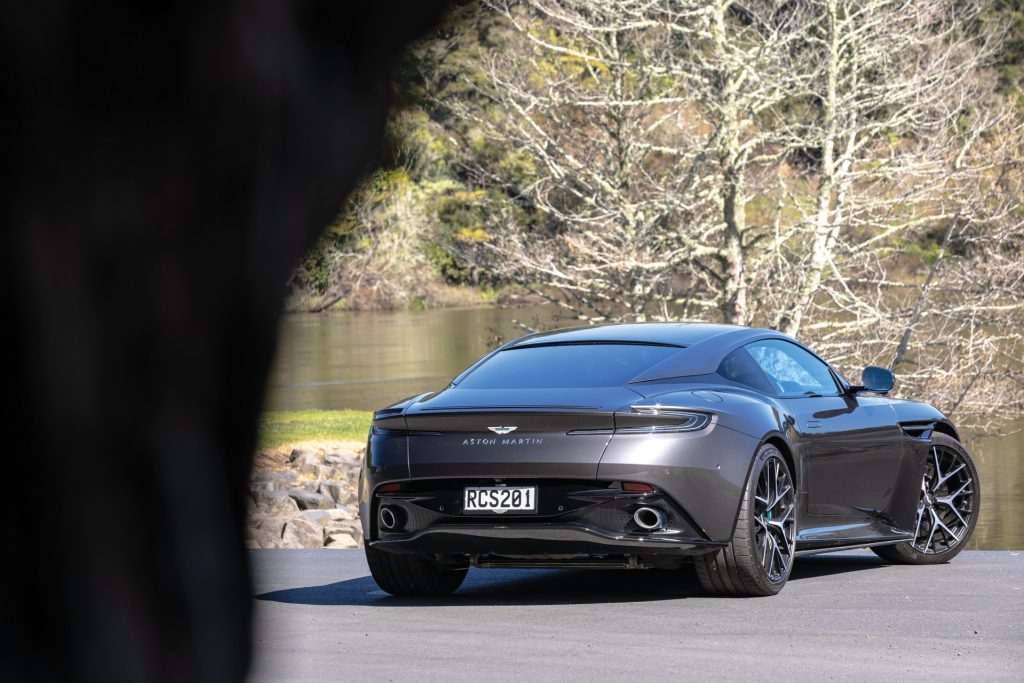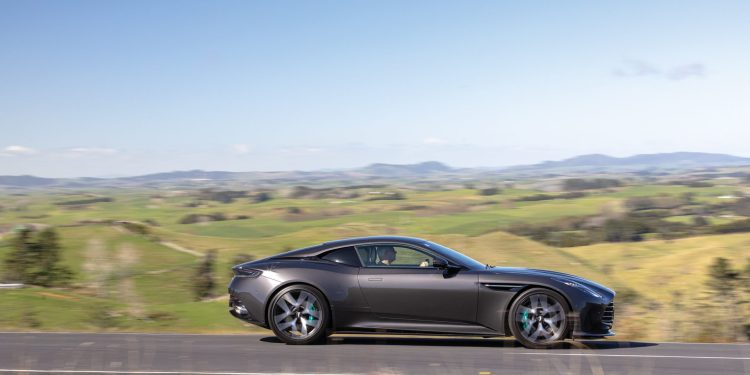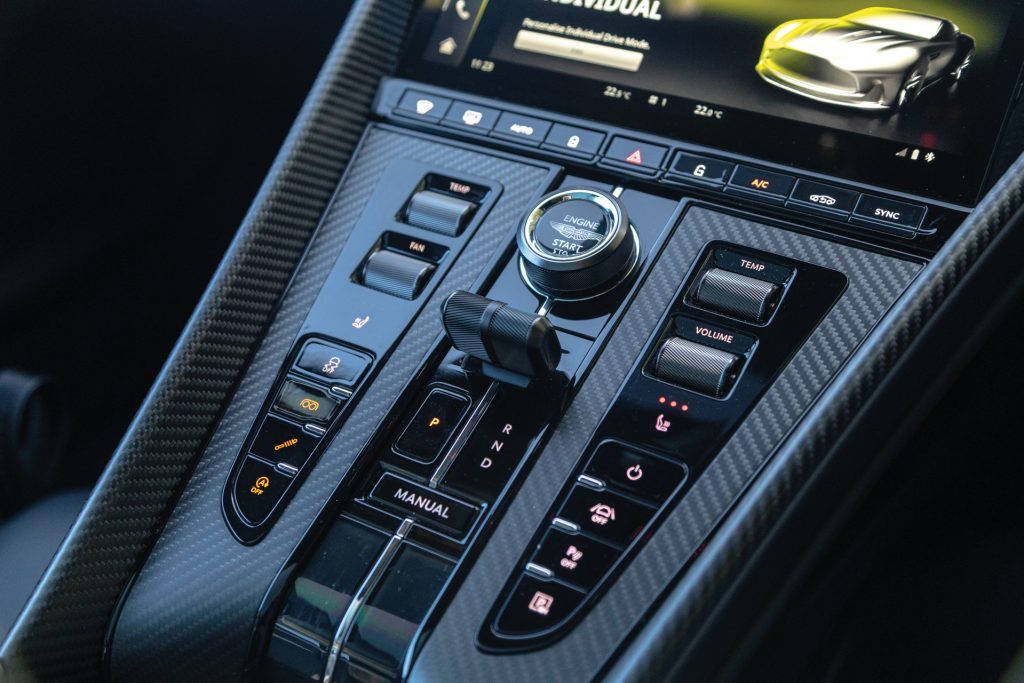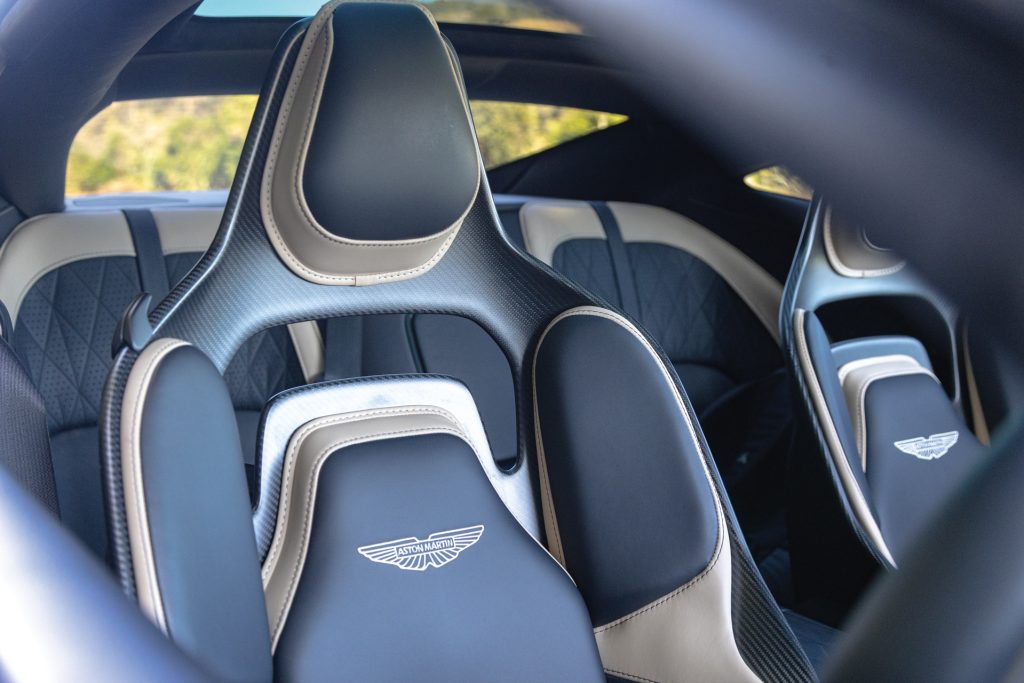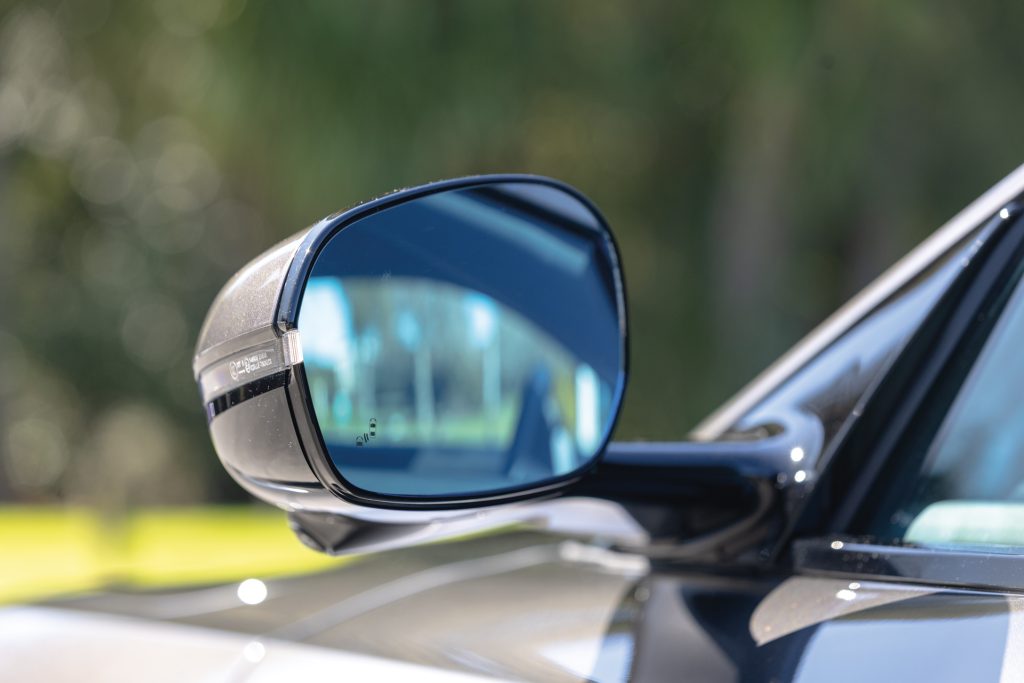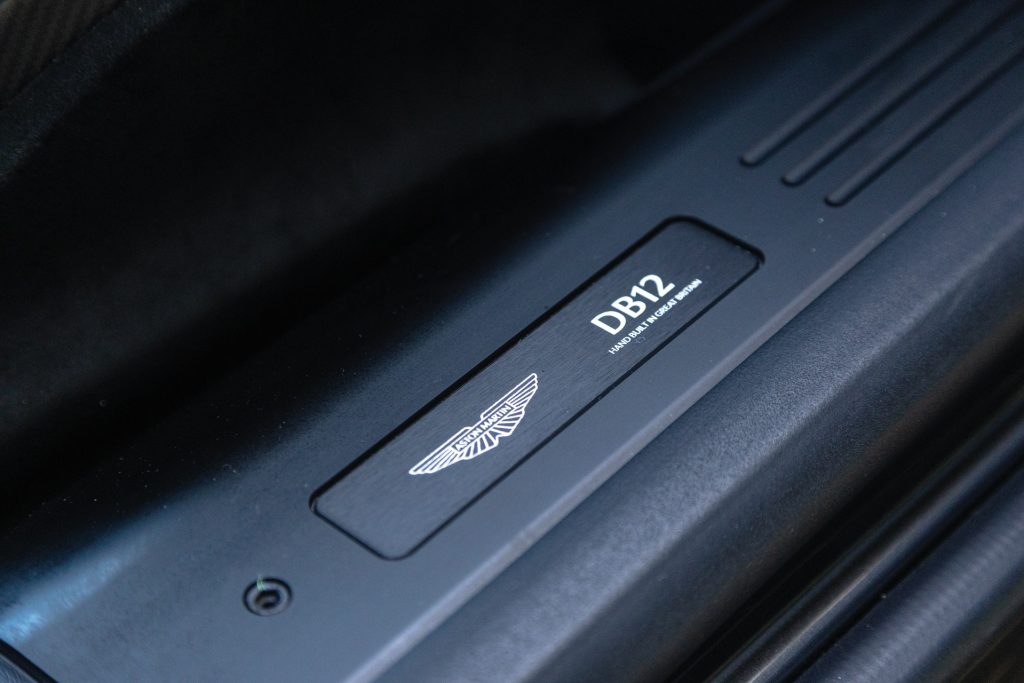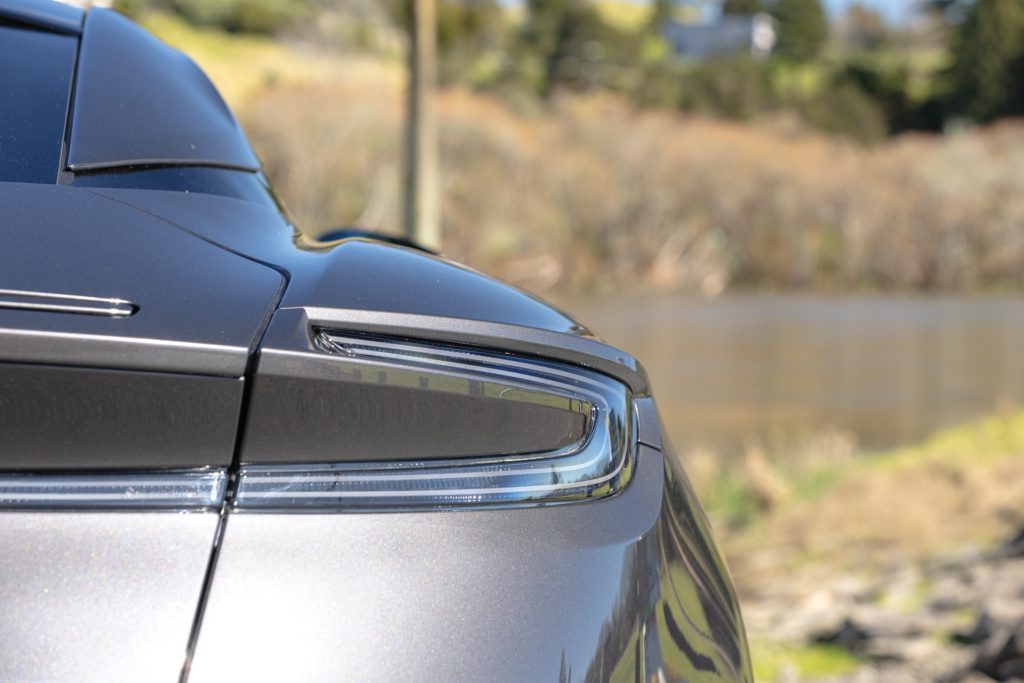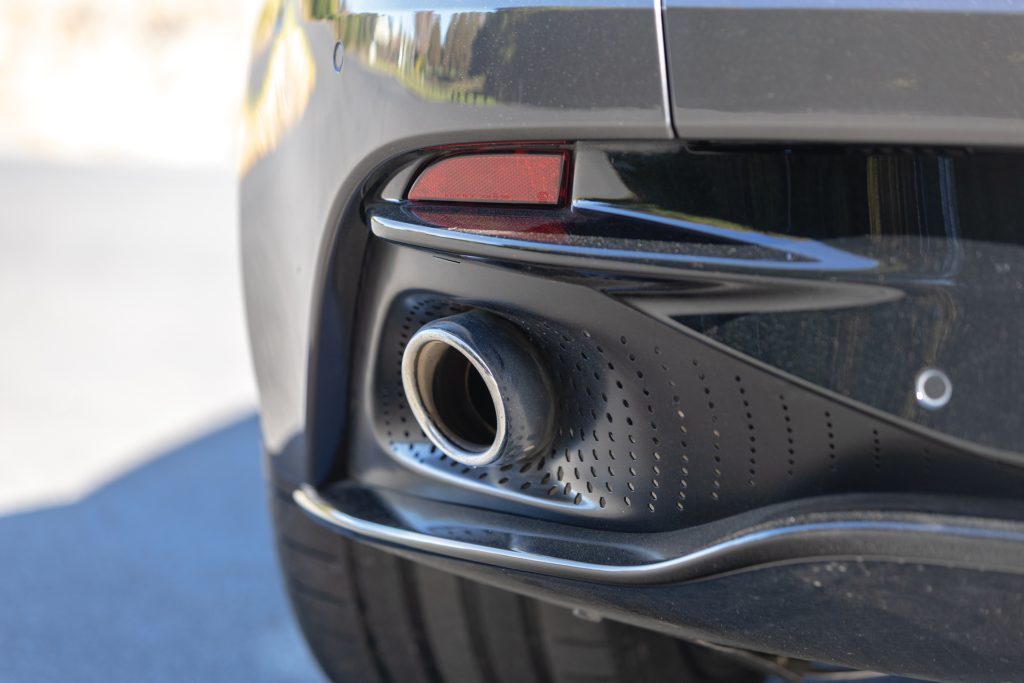2025 Aston Martin DB12 Review
Words: Peter Louisson | Photos: Alex Schultz
In its metamorphosis from DB11 to DB12, the Aston Martin GT moves to V8 power only but is quicker and its maker says it is a ‘Super Tourer’. Is it really?
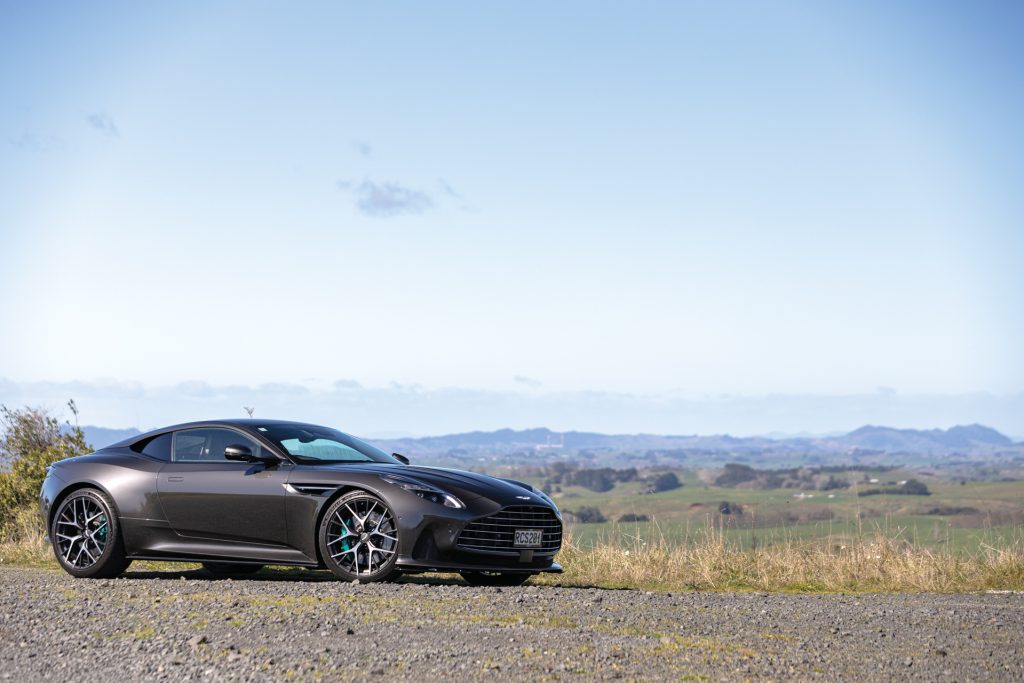
The Aston Martin DB12 arrives as both Coupe and Volante, and it takes over from the DB11, which was produced between 2016 and 2023. Despite the shared DNA, the “DB” badge, a V8 engine, and an eight-speed automatic, the commonality stops there. Aston Martin wants this latest creation to be regarded not as a GT but as a ‘Super Tourer’. That’s a bold claim, but then the numbers back it up: 500kW and 800Nm coursing solely to the rear wheels. Is that enough to make it a “super” GT?
Traditionally, the DB badge conjures thoughts of a V12 lurking under the bonnet, as it did in the DB9 and DB11. Yet the DB12 takes a different approach. The number 12 doesn’t signify cylinder count; rather, it simply denotes the model after the DB11. While purists may initially balk at the absence of a dozen cylinders, the logic makes sense. The DB stands for David Brown, the company’s historic owner, while the “12” continues the lineage. It’s evolution by number rather than engine configuration.
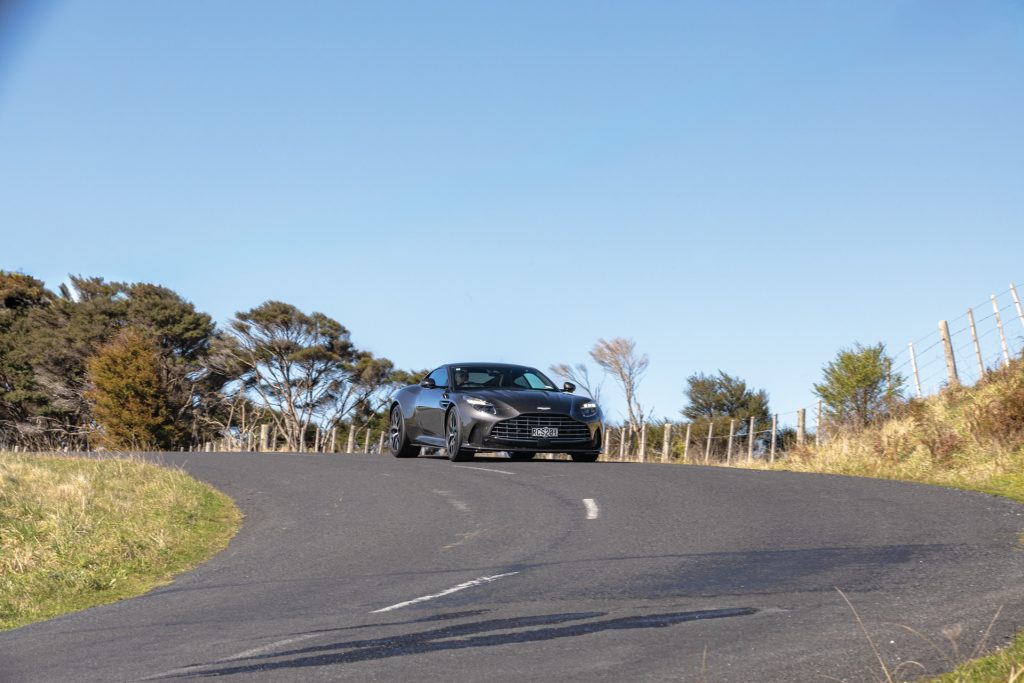
Big changes for the V8TT
The power unit itself is a Mercedes-sourced 4.0-litre twin-turbo V8, familiar from the DB11, but here it has been thoroughly reworked by Aston’s engineers. They’ve installed modified camshafts, lifted the compression ratio, added larger turbos, and improved cooling. The result? More than a third extra power compared with the DB11. To sharpen response further, the final drive is 13 percent shorter. That translates into solid performance figures. A sprint time is down now to a claimed 3.6 seconds, solid for a rear-drive machine, and top speed is said to be 325km/h (or just over 200mph). The speedometer cheekily extends to 360km/h, a reminder of the car’s ‘super’ credentials.
Aerodynamics play a big role in ensuring that speed is usable. Cleverly placed vents run from the rear side windows to the tail, exiting just behind the spoiler to boost stability and downforce. Strakes at the front redirect turbulent air away from the wheels. These touches don’t just aid handling; they also retain the clean, uncluttered lines Aston is known for. And that matters, because the DB12’s rivals like Mercedes-AMG GT and top-tier Porsche 911s are formidable indeed.
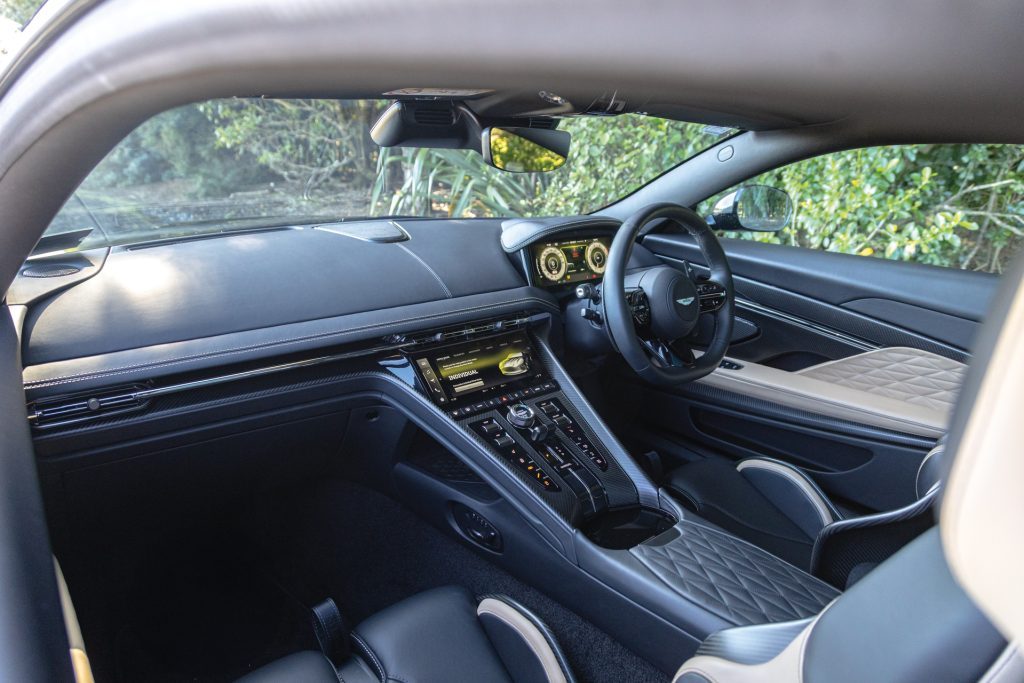
Cosy cabin experience
Visually, the DB12 is striking, more the grand tourer to behold rather than a pure sports car like the smaller Vantage. It’s a 2+2, with rear seats that could charitably be described as occasional. They’re best suited for small children, handbags, or perhaps a lap dog. Adults needn’t apply. Up front, however, the driver and passenger are treated to a less claustrophobic experience. Think cosy rather than tight.
Our test car featured optional carbon-fibre sports seats. These are the sort you’d want if track days are on the agenda, with bolsters that hug the hips. They’re cosseting, and their firm embrace means larger occupants might feel hemmed in. It makes entrance a touch more awkward than usual too. Standard seats would likely prove more comfortable for everyday use. The racy numbers sure do drop you low into the car though, as a Super Tourer should. Adjustments are partly manual and partly powered, with a neat leather strap under the thighs allowing easy fore-and-aft movement.
From outside, the stance is muscular, with pronounced rear haunches and broader tracks than the DB11. The bonnet is a sculpted piece of art, its creases adding drama, while hiding beneath, the engine is set as far back as possible, in a “front midship” layout. Almost all cylinders sit behind the front axle, delivering a tasty 48:52 weight distribution that contributes directly to the car’s balanced handling.
Analogue and button controls
Step inside, and the DB12 reveals itself to be more analogue than many modern cars. This is no screen-dominated cabin. The infotainment display does what it suggests. Here the emphasis is on physical controls. Knurled knobs control temperature, fan speed, and volume, while a dramatic circular button fires up the engine. A small gear selector sits in behind. Buttons for lane-keeping, ESP, stop/start, seat heating and ventilation, manual shifting, exhaust note adjustment, and suspension damping are all present and correct. We kept accidentally turning on the heated seats during our winter drive, which was no great hardship. Perhaps you’d knock the ventilated seat controls in summer.
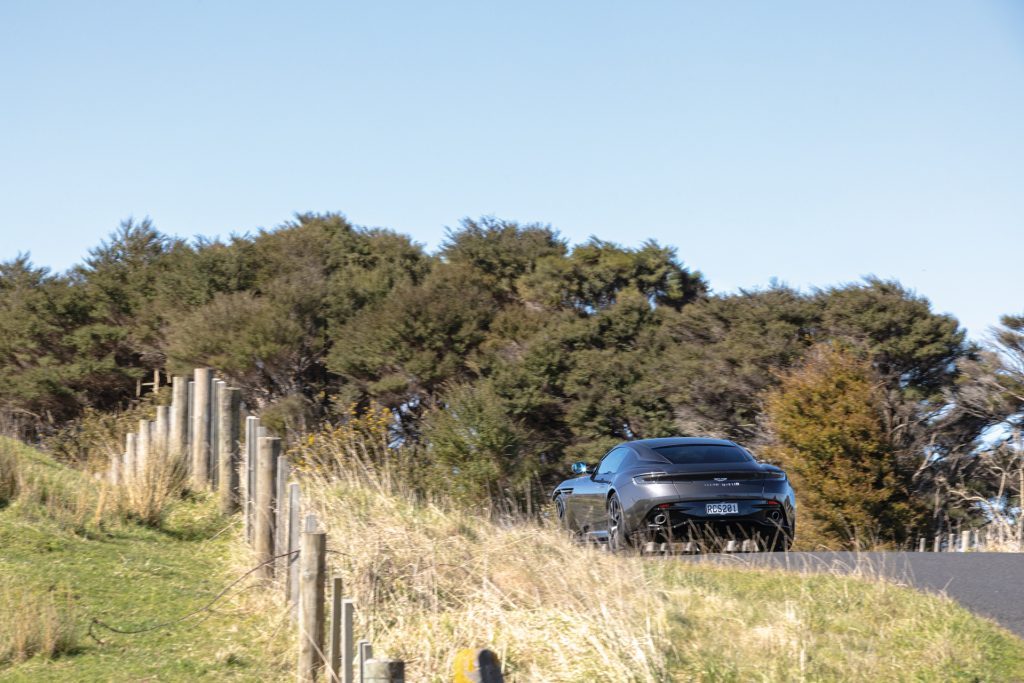
The ability to tailor powertrain and suspension independently is thoughtful. You can enjoy the compliant ride of the default GT setting or heighten powertrain response in the Sport modes without sacrificing ride quality. It’s the right blend for long-distance touring but you want to go firmer for sport driving for better body control.
On the steering wheel are even more buttons, though some are haptic and fiddly. For a car nudging half a million dollars, their usability could be better. Odd omissions stand out: there’s no head-up display, and no heated steering wheel. And while a sunroof is fitted, there’s no sunblind. We imagine the glass blocks almost all UV, so perhaps it wasn’t deemed necessary. And it likely would have impinged on head clearance.
Space is tight. The 2+2 rear seats, as mentioned, are more there for completion than practicality, and even up front there’s not a great deal of stowage. The phone charger is tucked away almost out of sight, which is probably a good thing. Visibility is another compromise, thanks to laid-back A-pillars and those broad proportions. Parking requires caution, especially with gorgeous 21-inch alloy wheels that could easily rub against unfriendly kerbing.
Finding a comfortable driving position is pretty straightforward. The steering column is powered, and there’s generous seat adjustability. It’s a cabin that prioritises the driver’s engagement over gadgetry, which is refreshing in an era where so many cars drown you in menus and submenus.
Quite the runner now
On the road, the DB12 feels every inch the performance machine Aston promised. While not as shockingly quick as modern twin-motor EVs, it’s blisteringly rapid in traditional terms. The speed comparison with the Vantage is revealing. They’re essentially neck and neck. In our hands, the DB12 is just a tick slower to 100km/h, and their in-gear acceleration times are nearly identical. Even braking distances are closely matched, with the slightly lighter Vantage pulling to a halt a metre earlier in emergency stops from 100km/h.
This means the DB12 is a genuine quick-fire GT, steering capably, quickly and with involvement in exhilarating bursts, yet tuned for longer journeys. The exhaust note is pleasingly judged. It’s neither shouty nor subdued; a rich soundtrack befitting a luxury tourer. Fuel consumption, inevitably, is on the high side but it’s not what you’d call a drinking problem. Aston claims 12.2L/100km, while the long-term readout showed 16.2. Our own experience returned 12.1, rather close to the official figure, and that included a mix of motorway cruising, rural back roads, and performance testing. With a full tank, range hovers around 375km, which may not impress many EV owners. However, it does mean a refill gets you back on the road much quicker.
Aerodynamics again play their part, not just in outright speed but in stability and efficiency. Even when driven with intent on country roads, the DB12 remained composed, neutral, its balance a product of weight distribution, aero trickery and a torque vectoring rear diff.
Super Tourer Achieved?
So, does the DB12 live up to Aston Martin’s claim of being a Super Tourer? Largely, yes. It blends superb performance with long-distance comfort, adds just enough everyday usability, and looks riotous while doing so. It’s not without its drawbacks. Rear seats are no more usable than those in a 911, internal storage is scarce, and some missing features may irk at this price point. But judged as a machine designed to thrill its occupants while devouring distance, it’s hard not to be impressed.
Against 2+2 rivals like the AMG GT and various 911s, it holds its own, except on the pricing front where some versions of these are less expensive. However, if you’re besotted by the DB12 styling that might sway things. Otherwise, there’s always the slightly less expensive two-seater Vantage to consider.
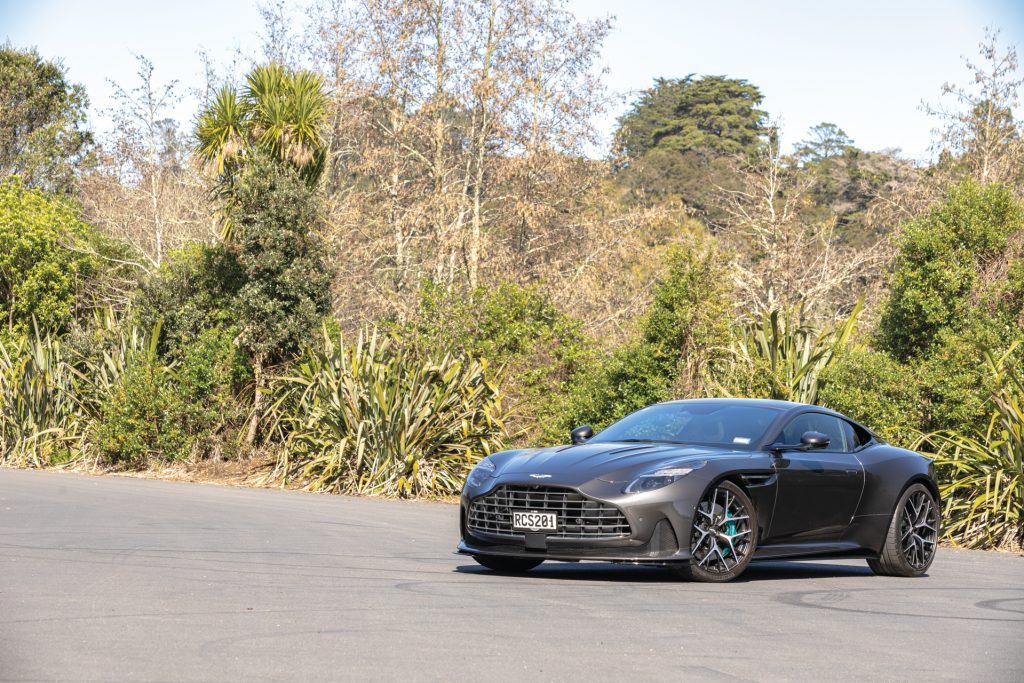
Aston Martin DB12
$545,255 / 12.2L/100km / 278g/km
0-100 km/h 3.62s
80-120 km/h 1.86s (52.5m)
100-0 km/h 34.77m
Speedo error 96 at an indicated 100km/h
Ambient cabin noise 76.1dB@100km/h
Engine 3998cc / V8 / T / DI
Max power 500kW@6000rpm
Max torque 800Nm@2750-6000rpm
Drivetrain 8-speed auto / RWD
Front suspension Wishbones / swaybar
Rear suspension Multilink / swaybar
Turning circle 12.4m (2.3 turns)
Front brakes Ventilated discs (400mm)
Rear brakes Discs (360mm)
Stability systems ABS, ESP, TV
Safety AEB, ACC, BSM, LDW, RCTA, ALK, AHB
Tyre size f-275/35ZR21 r-325/30ZR21
Wheelbase 2805mm
L/W/H 4725 / 1980 / 1295mm
Track f-1665mm r-1650mm
Fuel capacity 78L
Luggage capacity 262L
Tow rating Not rated to tow
Service intervals 12 months / 16,000km
Scheduled servicing 3yrs / unlimited km
Warranty 5yrs / unlimited km
ANCAP rating Not rated
Weight (claimed) 1796kg
